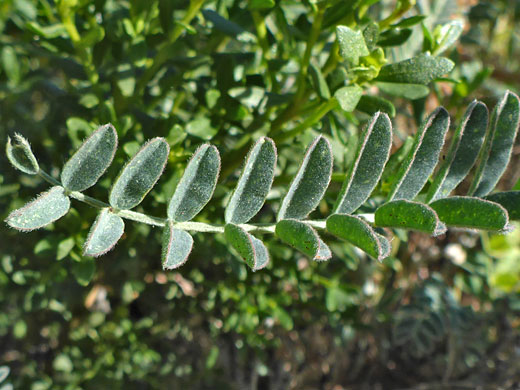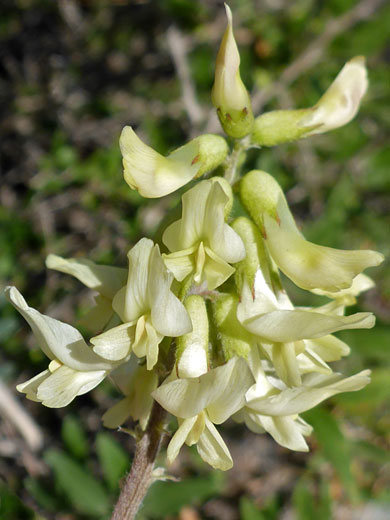Astragalus Trichopodus, Santa Barbara Milkvetch
Plants > Wildflowers > Fabaceae > Astragalus Trichopodus
Common name:
Santa barbara milkvetch
Family:
Scientific name:
Astragalus trichopodus
Main flower color:
Range:
Coastal areas of southern California, and some inland mountains
Height:
Up to 3 feet
Habitat:
Washes, chaparral, hillsides, fields, coastal bluffs
Leaves:
Up to 20 cm long, with between 15 and 39 leaflets, these strigose, lanceolate, up to 1 inch long
Season:
February to June
Astragalus trichopodus occurs along and close to the coast of southern California, from San Diego northwards to Santa Barbara and beyond. This is one of the taller members of this large genus, up to 3 feet, branching profusely. Stems are covered by short strigose hairs and longer, spreading hairs. The pinnate leaves have a terminal leaflet and from seven to 19 opposite pairs of lateral leaflets, all similar in size, often folded up along the axis.
The inflorescence is a series of fairly open clusters, attached by long, hairy stalks. Flowers, ten to 50 per cluster, are spreading to reflexed; they have a hairy green calyx, divided about a third of its length into triangular lobes, and a creamy-white corolla, the banner petal of which is angled back at around 45 degrees. Fruits are short pods, linear to narrowly elliptic.
There are three varieties of astragalus trichopodus (phoxus, lonchus, trichopodus), differing in the fruit characteristics.
The inflorescence is a series of fairly open clusters, attached by long, hairy stalks. Flowers, ten to 50 per cluster, are spreading to reflexed; they have a hairy green calyx, divided about a third of its length into triangular lobes, and a creamy-white corolla, the banner petal of which is angled back at around 45 degrees. Fruits are short pods, linear to narrowly elliptic.
There are three varieties of astragalus trichopodus (phoxus, lonchus, trichopodus), differing in the fruit characteristics.
All Contents © Copyright The American Southwest | Comments and Questions | Contribute | Site Map





